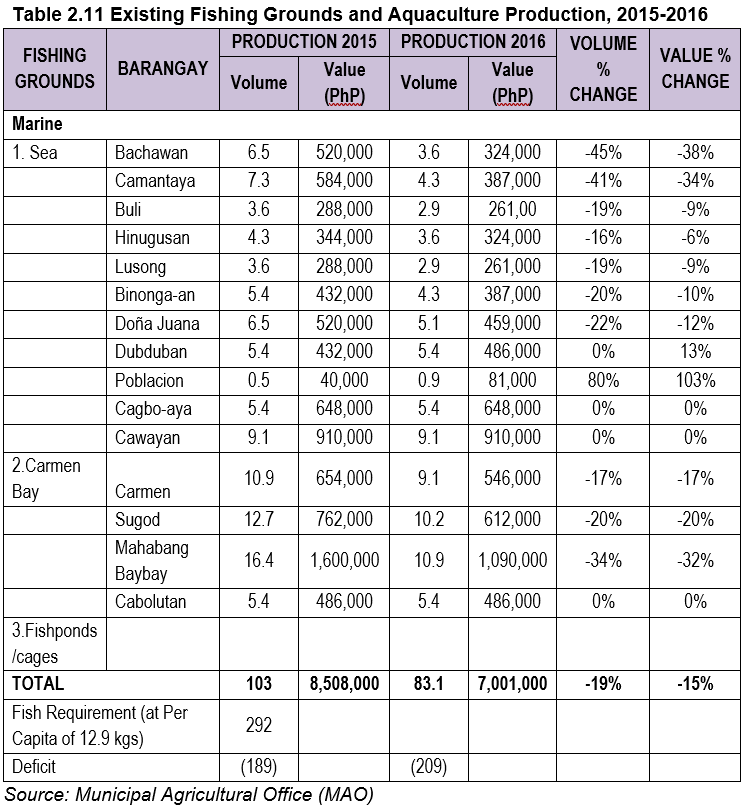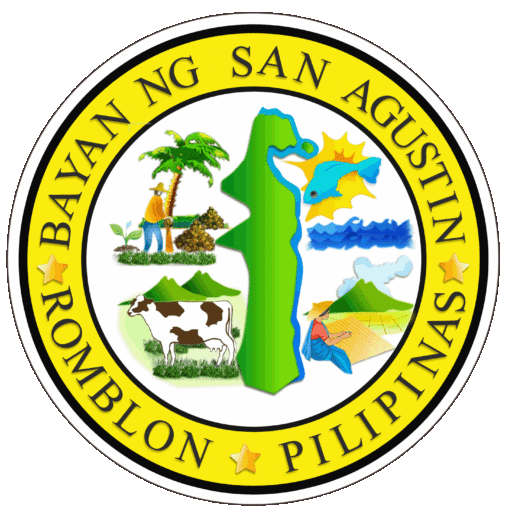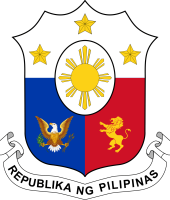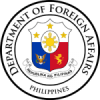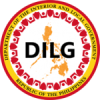Socio Economic
The growth and development of a community or town is premised on the key concerns of public health and education. It is imperative that the physical and social well-being of the townspeople are being attended to. The state of well-being of the people of San Agustin are presented here to identify key issues and gaps that needs to be met in terms of program development priorities, personnel, equipment and facilities.
The Primary Sector (Agriculture, Forestry and Fishing)
The main agricultural activities in the town are: rice production, coconut production and fishing provides the main source of livelihood for the residents in San Agustin.
A. Agricultural Crops
The farmers primary cop products are rice, coconut (copra), and banana (Table 3). Coconut dried as copra is the biggest earner (PhP388M) and is considered as an export product. Rice and banana are basically consumed locally. Abaca and root crops are also identified as major crops
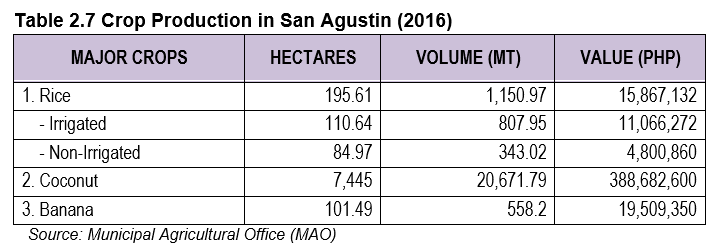
Coconut performance was stagnant during 2015-2016 (Table 2.7) but banana, root crops and rice all registered growth during the period. For rice, average yield per hectare during 2016 was 5.9 MT per hectare which is higher than the national average of 3.9 MT per hectare which indicates good crop performance by this crop. But rice remain insufficient in the municipality since actual demand in 2016 was around 2,478 MT for the town’s current population of 22,696 (at per capita requirement of 109.2 per annum). This leaves a deficit of about 1,327 MT which is being imported from Mindoro and Iloilo
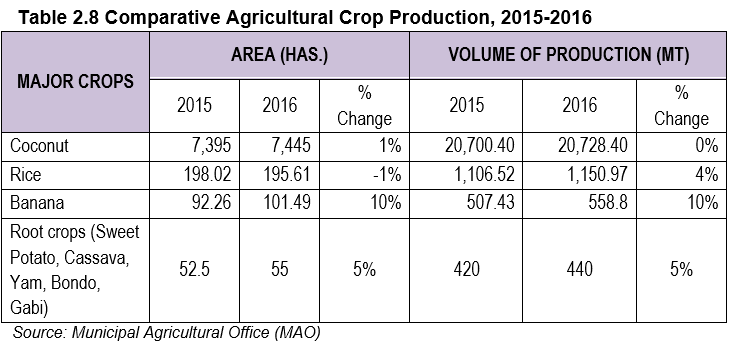
San Agustin is the leading municipality in Romblon in terms of area planted to coconuts with 13% of the province’s 57,686 hectares cultivated to the crop (Table 2.8). Similarly, in terms of number of trees, SAR partakes the largest share with 1,089,657 trees (17%) of the province’s 6,248,392 trees. While San Agustin has a higher area of coconut plantations, it trails other municipalities in terms of production per hectare. SAR ranks fourth in member of coconut farm workers (3,138) which is about 8% of the provincial total. Most or 95% of the coconut produced in the province are transported to either Lucena or Batangas. Lucena gets the bulk of 95% of the copra produced by the province. The irony of the situation is that the province buys its cooking oil from the said provinces
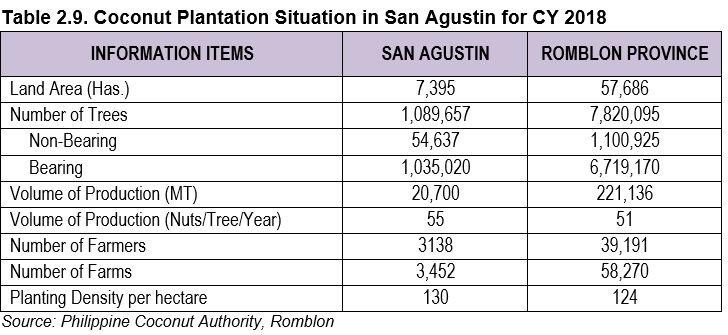
B. Livestock and Poultry
Present in the town are livestock and poultry which are raised mostly in the backyard and has been the source of alternative income for the farmers and their households (Table 2.10). Swine and cattle are the largest products in terms of volume and value followed by goat. Carabao and chicken are right behind with roughly half of goat’s volume and value. The total volume of combined meat and poultry is 552.38 MT with estimated value of PhP17M. Pending clarification of data on cattle, it appears that the town is a surplus producer in cattle and goat.
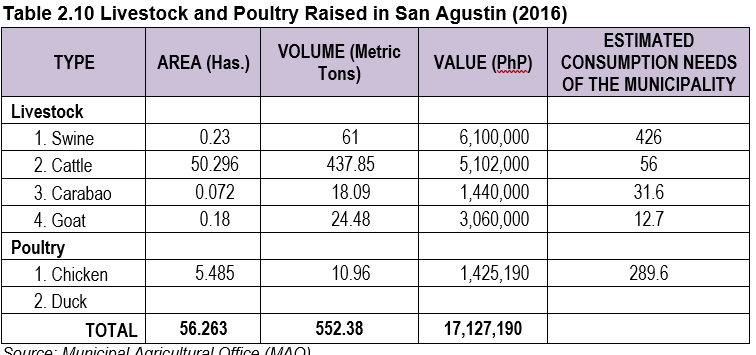
C. Fisheries
Fishing is a major activity in the municipality. As of 2016 there were 1,734 registered fishermen with a total of 723 fishing boats of which 675 are non-motorized while only 209 are motorized. The main fishing grounds are the open sea and Carmen Bay (Table 4.10). In 2015 total catch reached 103 MT with value of PhP8.5M but these declined in 2016. Using the national average per capita fish requirement of 12.9 kgs per annum the total fish requirements for San Agustin is about 292MT. This means the town despite being a coastal town with access to the vast seas is in shortage of fish which are being imported from neighboring towns. The main culprit is the lack of ice and cold storage that will encourage large fish production and possibly under reporting of fish catch.
Another data set provided by the Municipal Agriculture Office, shows that as of 2017 has 809 MT of fish production (500= commercial, municipal=309) indicating surplus production for fishing.
